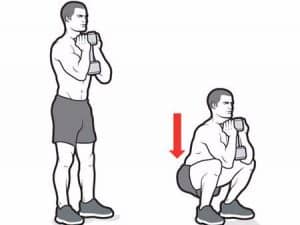
Adding muscle to your frame can be hard. There’s no way around it. Building muscle can be a slow and frustrating process and takes months of consistency and hard work to attain results. However, if we understand what stimulates muscle growth, maybe we can optimize the process and reach our goals in less time and with less frustration.
Warning: Science Content Ahead!

#1: Metabolic Stress
One key to stimulating muscle growth is to induce metabolic stress in the muscle fibers. This is done by overloading the anaerobic energy systems that provide our muscles with energy during resistance training. Increased metabolites from high anaerobic stress elicits a potent anabolic hormone response which stimulates muscle growth.
High Metabolic Stress Can Result From…
- High repetitions: 8 – 15+ reps
- Moderate loads: 65 – 85% of 1 rep max
- Short rest periods: 30 – 90 seconds

#2: Mechanical Stress
Another key to building muscle is to induce mechanical stress in the muscle fibers. This is done by overloading the structural proteins of the muscle itself. Disruption of the structural components of the muscle fibers is primarily caused by lifting heavy and elicits a potent response leading to muscle growth.
High Mechanical Stress Can Result From…
- Low repetitions: 1 – 6+ reps
- Moderate to Heavy loads: 75 – 95% of 1 rep max
- Longer rest periods: 2+ minutes
Another benefit to lifting heavy is that it recruits the highest amount of muscle fibers. When a heavy load is lifted, it takes a great amount of force which must be supplied by recruiting more and more muscle fibers within the muscle. Lifting with lighter weights won’t stimulate all of the available muscle fibers and thus not all muscle fibers will be stimulated to grow. Muscle fibers must be activated to promote significant muscle growth.


#3: Periodization
As you may have noticed, the two prior keys to building muscle are a bit different from each other. The first requires high repetitions with lighter loads, while the second requires heavy loads and fewer repetitions. So which do I choose? Well, if you’re new to training, the first method is going to be much safer and allow you to practice form before adding a bunch of weight. However, to see increases in both strength and size it’s important to include both types of training. This can be done by periodizing your training program. Essentially, you’ll spend periods of time focusing on different phases. Periodization allows you to experience adaptations from both styles of training – optimizing your potential for muscle growth. Also, don’t forget to practice post-workout muscle recovery techniques!
Want to Learn More About Building Muscle?
Send me an email me to schedule a complimentary session to learn more and create an exercise program specific to you!
Set up a Free Fitness ConsultationWritten by Marshal Stich, Certified Personal Trainer at Elite Sports Club – North Shore and Elite Sports Club – River Glen.
Marshal has a B.S. in Kinesiology and Exercise Science from UW-Milwaukee. He is an American Council on Exercise Certified Personal Trainer and Certified Group Fitness Instructor, and American Sport and Fitness Association Certified Cycling Instructor. He specializes in Body Weight and Boot Camp Style Training, Battle Rope and TRX Training, Fitness and Nutrition Education, Strength and Conditioning, Training for Weight Loss, & Group Exercise. Marshal enjoys camping, hiking, and playing guitar. He lives by the philosophy of “It always seems impossible until it’s done” – Nelson Mandela and he believes that becoming a healthier version of yourself is always possible. With a little bit of knowledge and the right amount of hard work, you can reach your health and fitness goals.
